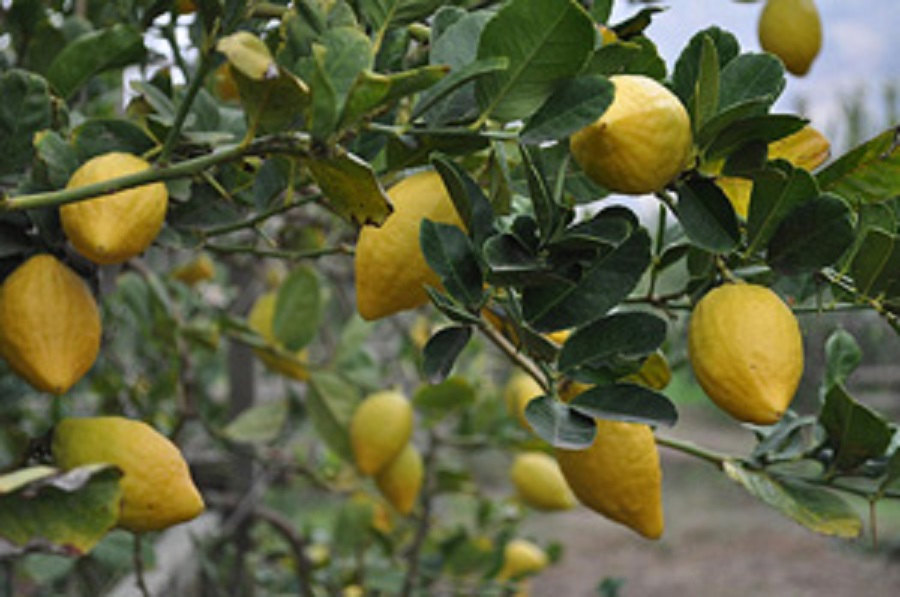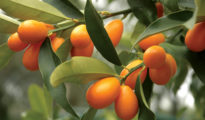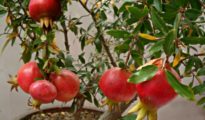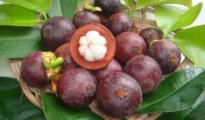You may have never heard of the etrog citron fruit, but that's completely normal as this fruit is extremely acidic and is not usually sold at your local supermarket. One of the largest citrus varieties, this fruit dates all the way back to 8000 BC, and holds significant religious importance for the Jewish faith. If you're curious about this little known fruit, keep reading to find out how to grow etrog citron, what it is, and how to use it!
How to Grow Etrog Citron – a DIY Gardening Guide

Etrog, also known as yellow citron, is primarily grown in the Mediterranean, Israel, and a few Central and South American countries. The tree is small and shrub-like, and grows fruits that resemble large, oblong lemons with a bumpy rind. Inside, you'll find pulp that is a pale yellow with lots of seeds.
As we mentioned earlier, the fruit itself is extremely acidic, and rarely eaten raw. The are used in the Jewish culture, during the festival of Sukkot, which is a biblical holiday celebrated on the 15th day of the month of Tisheri following Yom Kippur. The fruit is believed to be “the fruit of a godly tree”, and is highly prized, with some unblemished fruit going for as high as $100 per fruit!
The fruit itself is used to make candies, preserves, desserts, alcoholic drinks, and other savory dishes.
If you want to learn how to grow etrog citron, keep reading!
Planting Etrog Citron:
- These tree thrives in tropical and subtropical climates, and will not survival cold bouts of winter. Therefore, you'll need to live in a warm area or grow them in a greenhouse climate.
- Propagate via grafts and seeds and preferably in a container or pot for easy moving during cold times.
- Plant in good quality, well draining soil. This tree cannot tolerate wet roots.
- The tree has very sharp spines, so be careful when moving it or pruning it.
- Keep the tree in a sunny area and water 2-3 times a week if outdoors during summer, or once or twice a week if indoors in the winter.
- The tree will bear fruit within 4-7 years if watered regularly and given enough sun.
If you are planting for religious reasons, keep in mind that the tree cannot be grafted or budded onto other citrus rootstock.
Also, if you are planning on using the fruit for Sukkot, it should be checked by a competent rabbinical authority.
So now that you know how to grow etrog citron, it's time to roll up your sleeves and get to planting!
Like this post? Share and Pin 🙂





















Thanks for the good tips. I planted a few seeds in October and one is about 4 inches tall now. What can I do to prevent bugs from eating the leaves? I know this plant loves sun, but am I better bringing it indoors to protect it?
I would recommend that you leave the plant outdoors (weather permitting of course) until you actually see an insect problem. If you DO start to see bugs on the plant, try this DIY Insect Spray: it works really well and it’s safe for the rest of your plants!
https://plantinstructions.com/diy-gardening/diy-garden-insect-spray-to-get-rid-of-bugs/
I have 3 strong trees. They flower all the time. But never turn into fruit. They all are over 7 years old. Do Etrog trees self pollinate? Or do I need more trees? What could be the reason they flower but not fruit.?
Cant get mine to fruit; it fruited once when tightly packed in a greenhouse with 15 or so siblings. I thought their was a skinnier male plant that produced the pollen 0–but it seems from what i have read that they are self fertilizing–perhaps its a lack of pollinators in the winter, indoors where it blossoms
Reb Menachem the Graff
An excellent, terse explanation of everything I wanted to know about trying to grow etrog/citron from seed – this being the ideal time to try, after the Jewish holidays are well over and I have a particularly good one. The religious aspects of the discussion were well presented, too, which surprised me, it’s so uncommon.
Have had an esrog plant for 5 years indoors,palm beach fl, watering twice a week,and it is finally flowering, will fruit be next?